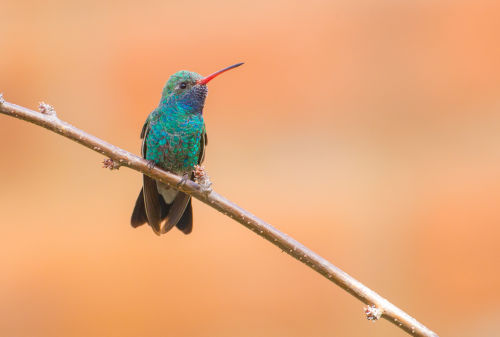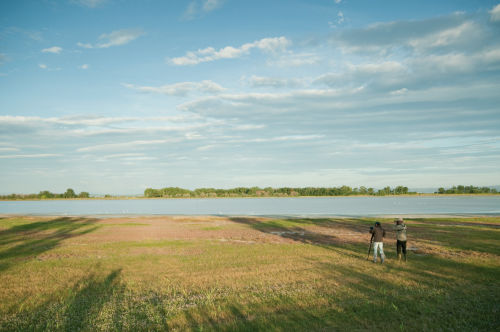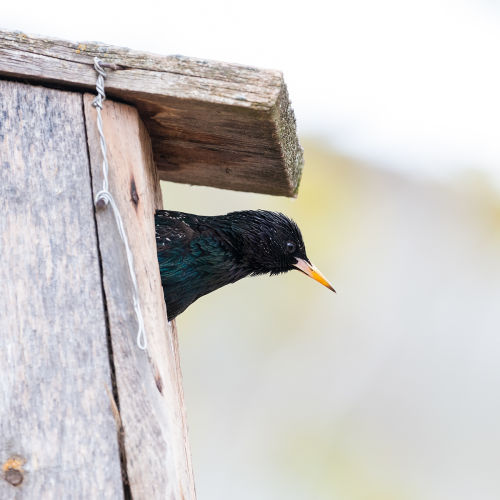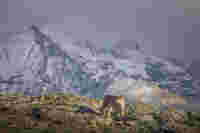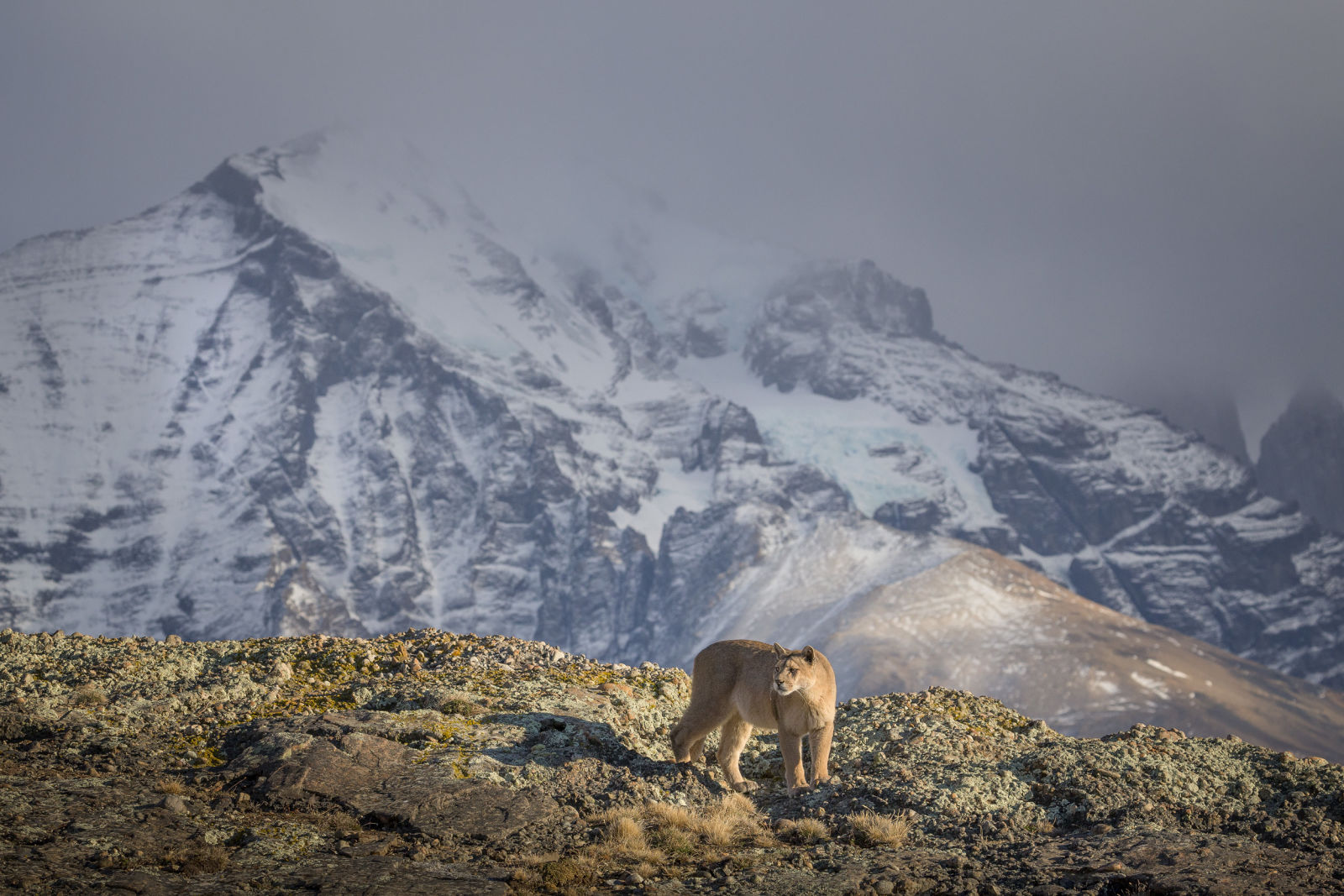Once again, the mountain peaks were shrouded in dense clouds. The fierce wind shook the tripods so much that it would probably have been impossible to capture a clear image anyway. Feeling somewhat frustrated, we packed the equipment in the ramshackle car and drove along the bumpy gravel track back to our tents, which we had pitched next to the entrance of the National Park. We were joking about whether our camp would actually still be standing in this strong wind when I noticed a movement in the dark mata negra scrub to my left. I braked slightly, and suddenly a puma and its two cubs ran over the track right in front of us.
We quickly grabbed our cameras from the back seat of the car, but the cats had already disappeared back into the dense undergrowth before we had a chance to take a picture.
This encounter took place 17 years ago. On that trip, I was with my friend Karl Jourdan, spending five weeks in the Chilean Torres del Paine National Park photographing guanacos. Throughout the whole trip, this would be our one and only encounter with a puma. Yet this fleeting moment was burned so deeply into my memory that I constantly dreamed of returning to southern Chile to photograph the wild pumas.
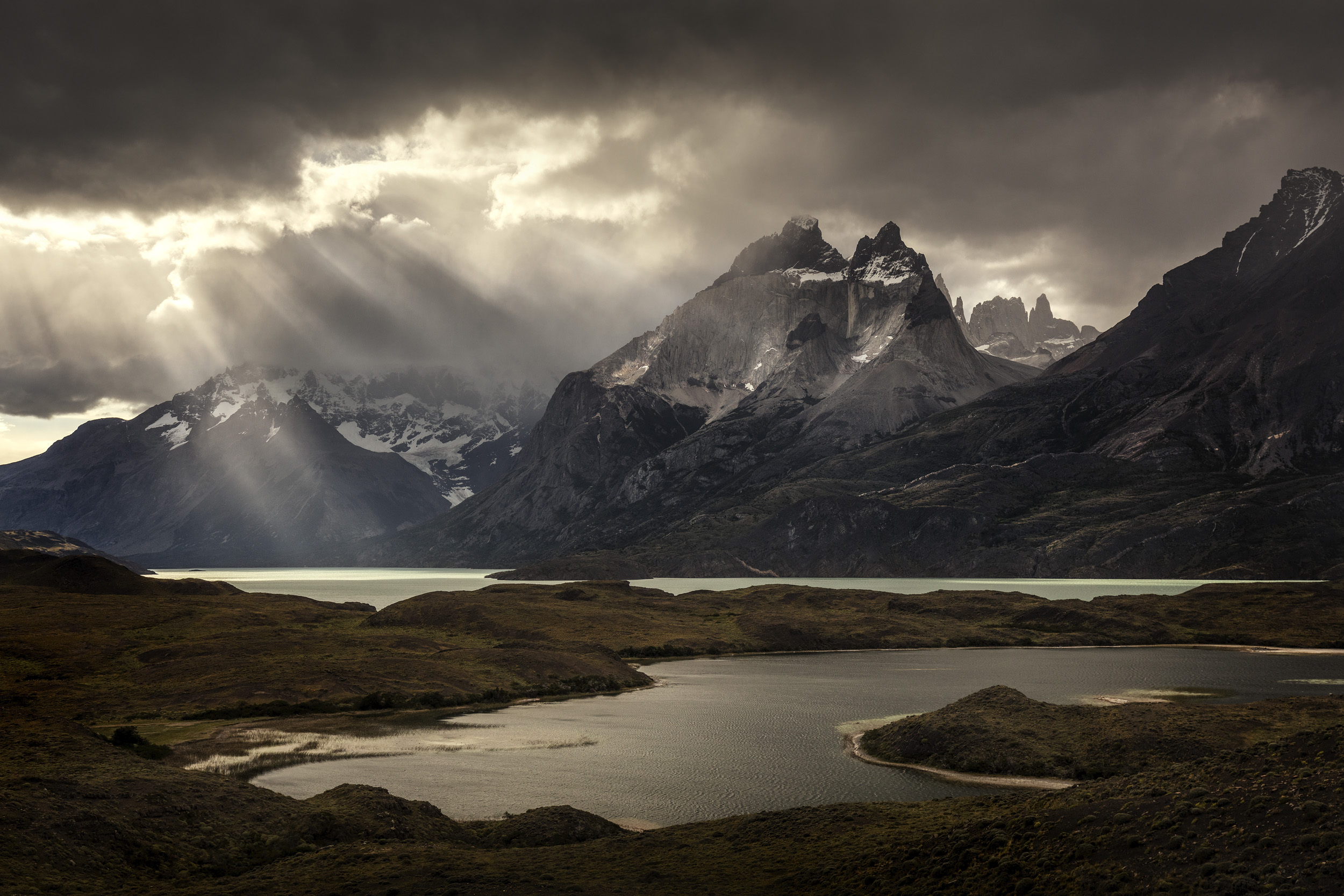
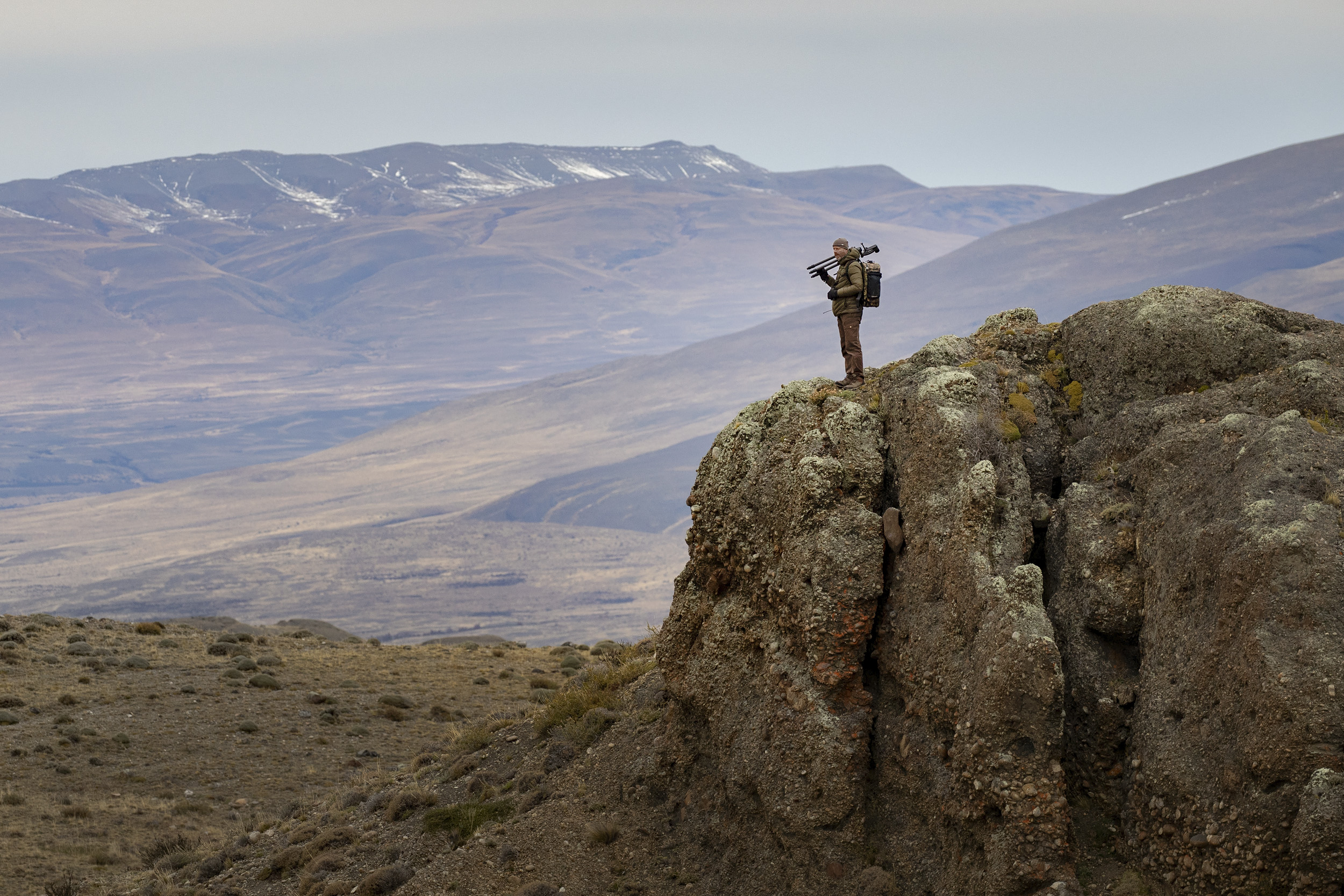
True love never dies
In 2015, a large photography project on the world’s last great grasslands took me back to South America to capture images of the Patagonian Desert. During this trip, I had the chance to go back to the Torres del Paine National Park. As the saying goes, “true love never dies,” and once again I was immediately captivated by this wild place on the southern tip of the American continent. Even today, almost no other landscape has cast such a spell on me as the windswept mountains of the Torres del Paine National Park. The weather is very changeable – they say you can experience all four seasons in one day in this region. Sometimes it seems to start off sunny in the morning, then the sky will suddenly grow dark as a huge snowstorm blows in... The breathtakingly beautiful landscape, extreme weather and diverse wildlife make this region unique.
During my photographic work for the grassland project, I soon found out that the chances of observing pumas in the Torres del Paine National Park had significantly improved. The shy cats in the National Park had been given protected status some time ago. Furthermore, some local farmers were no longer rearing sheep and now tolerated the pumas on their land. Although I did not personally come across any pumas on that trip, I heard many stories from tourists in the evenings back at the accommodation about chance sightings. So I decided to travel back to Chile that same year specially for the pumas. I was accompanied by experienced guides this time and within a period of two weeks, I actually managed to photograph several pumas. It was extremely difficult to spot these shy cats, but right from the start, I had the feeling that if I spent a lot of time here, it would be possible to compile the first extensive story of pumas living wild in the Torres del Paine National Park.
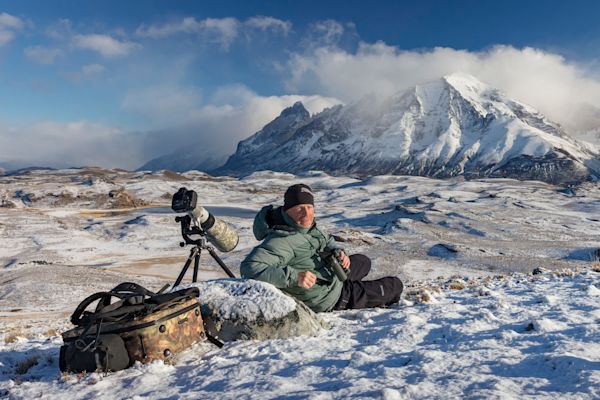
A real test of endurance
On the trail of the shy and solitary pumas
From the very start, I realized that this project would be unbelievably challenging. I would have to spend many months in Patagonia, would need experienced support, accommodation, and two all-terrain vehicles.
After a few weeks of essential preparations, the great moment then arrived. It was time to set off on my first trip for the puma project. I had decided to travel to Torres del Paine in winter as there are not so many visitors around then. My team consisted of two experienced trackers, a cook with expedition experience, and myself. Our accommodation was a small hut in the best area for puma sightings just outside the National Park.
Over the next few weeks, we spent every day out looking for the wild cats. Pumas are active mainly in twilight hours and during the night so we needed to be out long before sunrise and return only as it got dark. Our accommodation was very simple and the photography work was arduous, but the team worked together perfectly and we all got on really well. Not even extreme weather conditions with temperatures below -10°C (+14°F) could dampen our spirits. Despite all the water pipes to the hut freezing after a few days and the gradual depletion of our firewood, the atmosphere remained positive. It was so icy in the hut that the cold was waking us up in our down sleeping bags around 4 am and we couldn’t get back to sleep again. Only lighting the stove made it bearable. These first few weeks were a real test of endurance and the experience forged such a strong bond that I relied on the same team for the rest of the project.
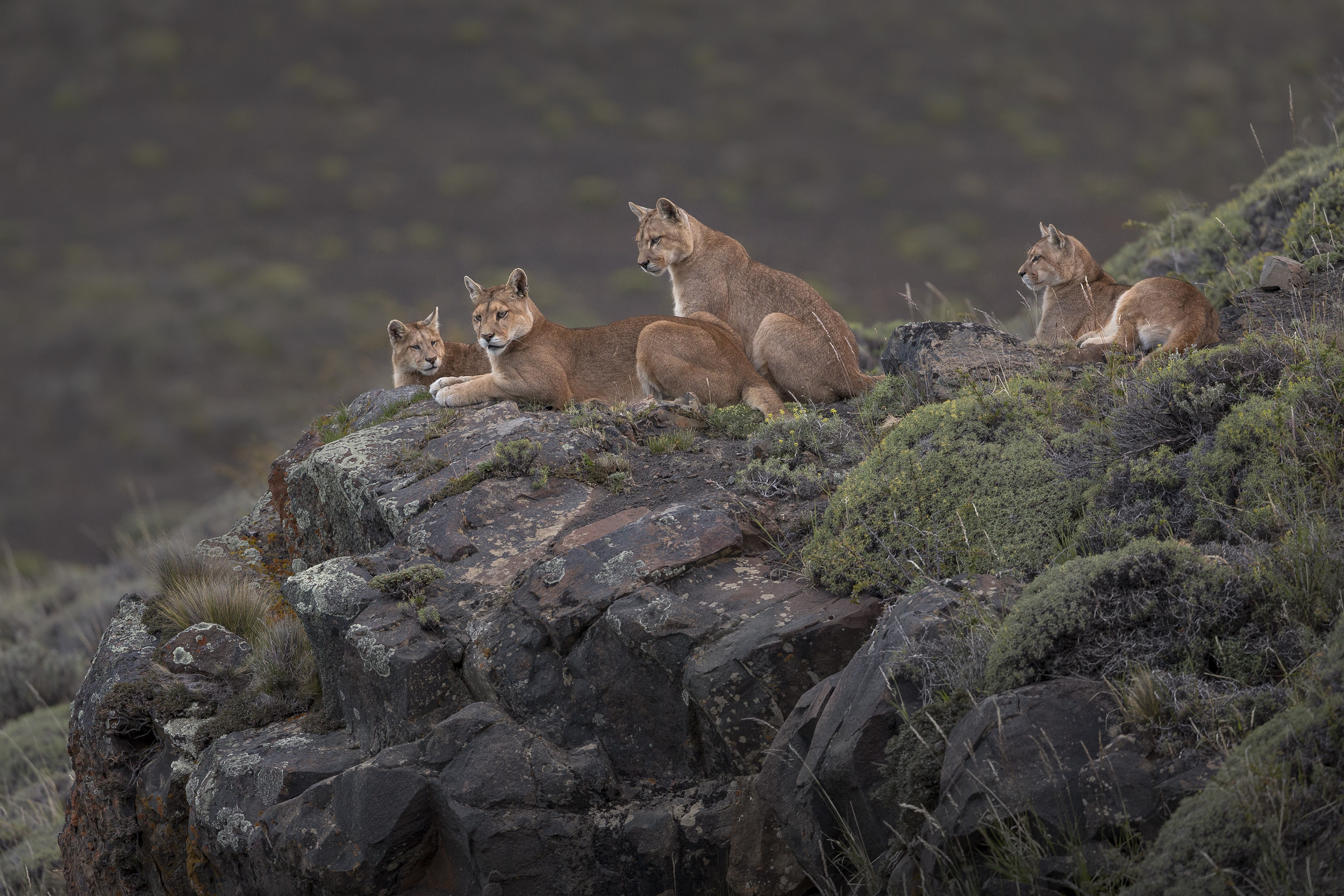

We actually saw pumas every day on this trip. But only a few of these encounters resulted in good pictures. Pumas are shy, solitary animals and are extremely difficult to observe in the wild. Working with these cats bears no comparison whatsoever to photographing lions, leopards, or tigers. Pumas are far more difficult to find. Even getting close enough to photograph them is much more complicated as pumas often disappear, even at a distance of a few hundred meters. But there are few things as exciting as photographing pumas, as rather than sitting in your car you’re out there looking the animal in the eye. There are not a lot of trails in the National Park. Some days, we had to walk for up to 20 kilometers (12 miles) carrying heavy camera equipment on our backs to find or follow one of the wild cats. Other days, we would spend the entire time hiding behind a rock, often in extreme wind and cold, until a photo opportunity arose. It is precisely this kind of wildlife photography that appeals to me. I like being out in the wilderness, in touch with the elements, sweating, freezing, feeling the frustration and then the excitement of finally capturing the perfect shot. For me, there is nothing more
beautiful – this is exactly why I love my job.
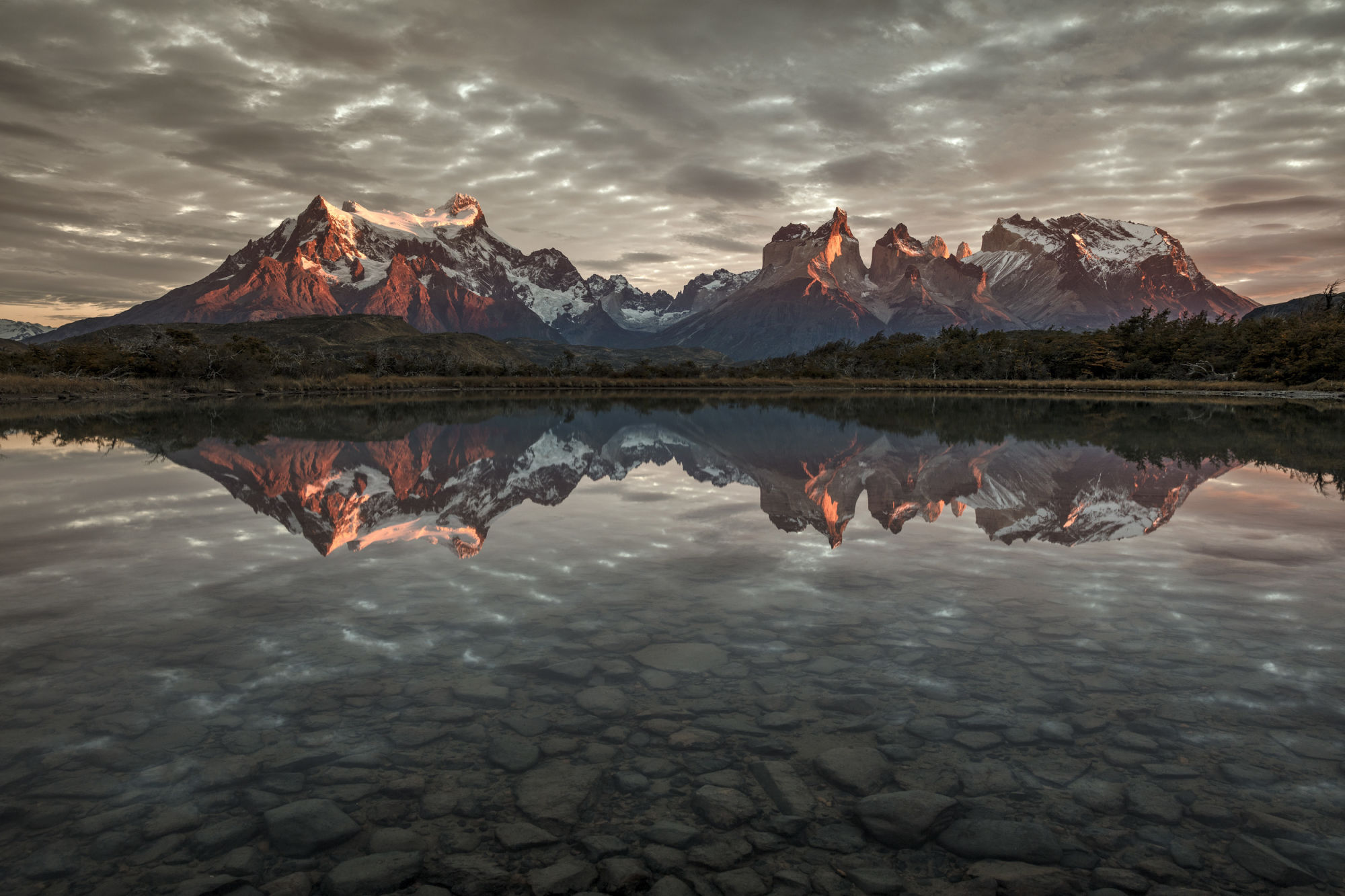
The first trip for the puma project was already a great success. The resulting photos helped me to attract potential partners. Over the following two years, I made a further six trips to the wild pumas of Patagonia and in total spent over seven months there.
Over time, I observed that pumas react very individually to people and some animals are less timid than others. In the course of my photography work, I had the chance to observe more than 20 individual animals. I grew particularly fond of two female pumas, Sarmiento and Colmillo. I had the unique opportunity to photograph these two animals and observe how they reared their young: from the moment the cubs
first began to roam around with their mothers to the time they were fully grown, at around a year and a half, independent and starting out on their own lives.
Pumas are wild cats and can be dangerous to humans. I always kept a safe distance from them during my work. Some animals who had known me for months became accustomed to my presence and began to trust me. At times, these animals came very close, sometimes even lying down to sleep not far from me. I took this behavior to be a sign of trust and confirmation that I had gone about my work with sufficient care.
About the author
Ingo Arndt was born in Frankfurt am Main, Germany. From early childhood, he spent every single minute of his spare time outdoors in nature. Soon he realized that photography was a useful tool in environmental protection, so, after finishing school in 1992, Ingo plunged into the adventurous life of a professional photographer. Since then, he has traveled around the globe for extended periods as a freelance wildlife photographer, photographing reports in which he portrays animals and their habitats. In the past few years he has been mainly on assignment for GEO and National Geographic Magazine. With his images, Ingo wants to stimulate and increase the awareness of his viewing audience and show them the magnificence of nature.
His adventures with the pumas in Torres del Paine National Park have also been published in the book PumaLand (2019).
